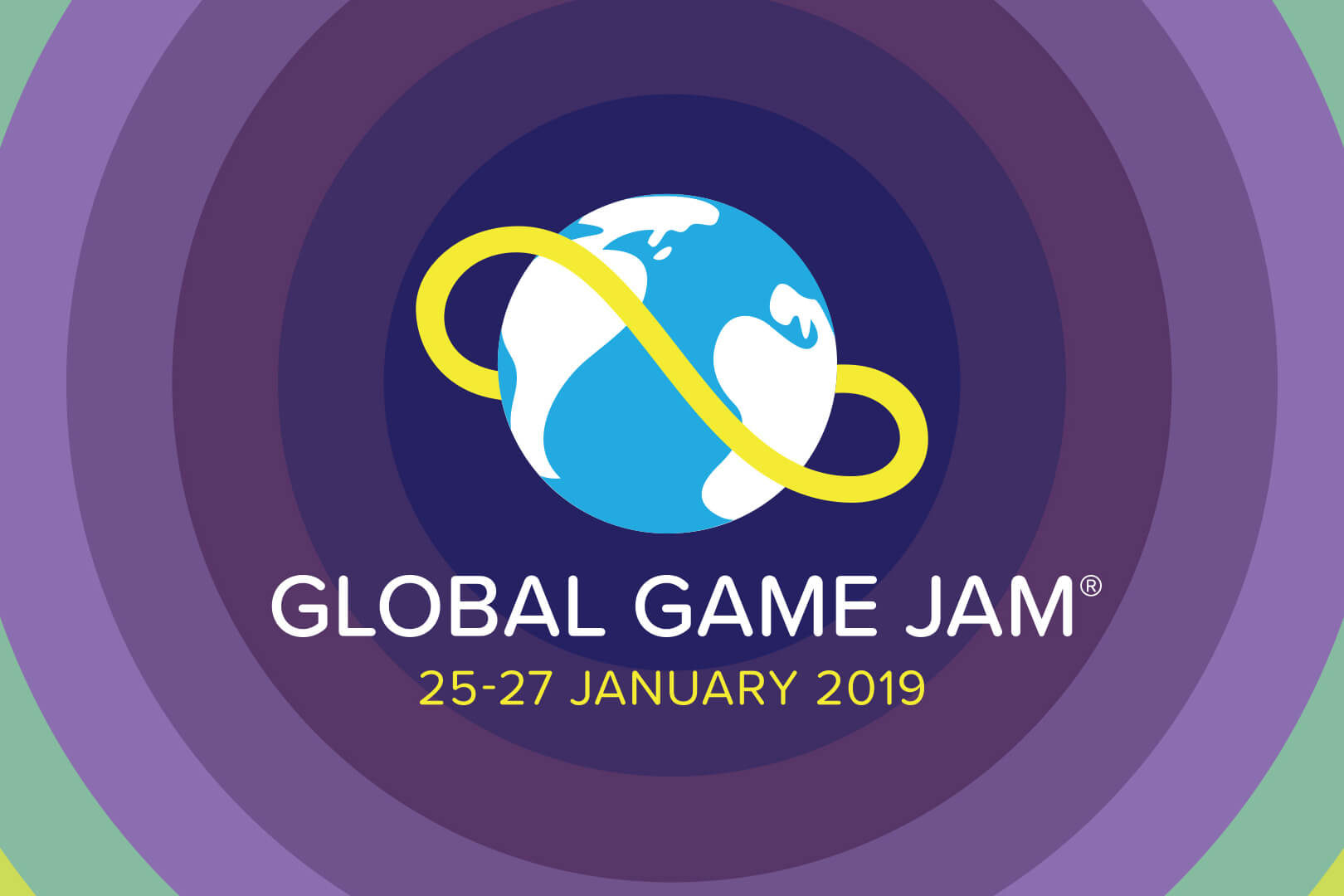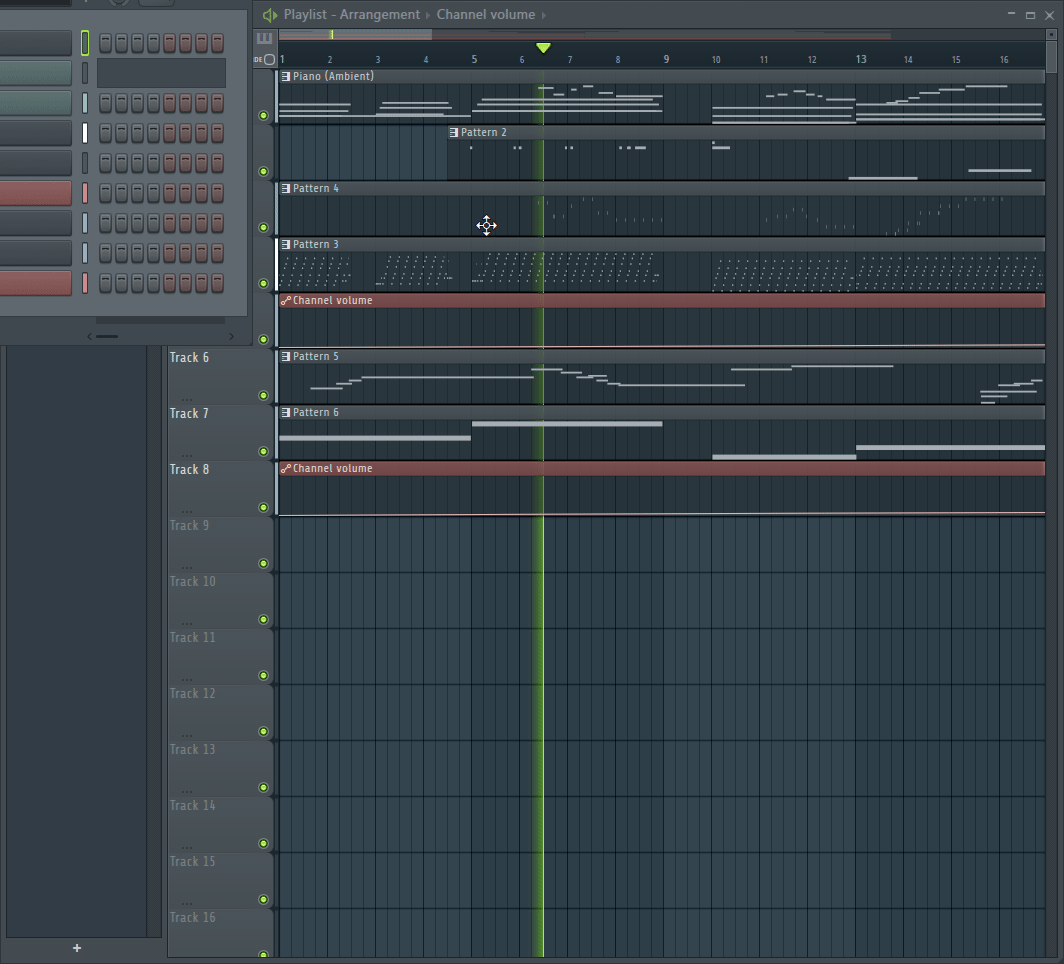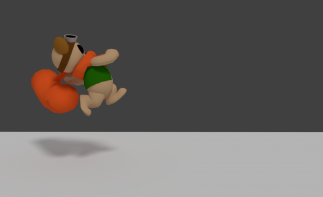Global Game Jam 2019 recap.
The Event
After 11 years, the Global Game Jam is still going strong. This year, 47,000 jammers made 9,000 games at 860 sites across 113 countries. This year, 10 new countries had jammers take part for the first time ever: Azerbaijan, Iraq, Sri Lanka, Kazakhstan, Kosovo, Kenya, the Ivory Coast, Myanmar, Namibia, and Rwanda!
This year, Global Game Jam 2019 took place from January 25th to January 27th; I was there for a majority of the time! Typically, the game jam time is based on your timezone: the theme is typically held under a public embargo until Hawaii (the last country by timezone) hits 5PM.
Theme
This year’s game jam theme was [What Home Means To You](https://globalgamejam.org/news/theme-global-game-jam-2019-%E2%80%A6). As is customary, it was revealed at the end of the keynote video sharing interviews with people from all over the world, speaking in their native language about what home means to them.
Venue
Global Game Jam was hosted around the world;That’s what the “global” was for! This year, the jammer location for RIT students was the main lab for IGM students. One welcome change was the ability to use the brand-new MAGIC center labs!
Sponsors & Diversifiers

There were tons of sponsors who showcased and paid for resources as part of this event! While Unreal Engine and Unity3D were expected returning sponsors, there were others that always stand to support important causes that the game development community were keen to help represent.
iThrive Games sponsored the Forgive and Fortify diversifier, encouraging developers to explore forgiveness. GitHub encouraged developers to Use the Source: participants were encouraged to use one or more open source tools, game engines or libraries in their projects. Valve wanted players to make a game independent of language - something that could be understood regardless of a player’s language. And as always, the jam organizers encouraged all developers to make accessible work! One diversifier even encouraged participants to utilize works that were recently released into the public domain at the start of 2019.
Highlights
- Over 50 hours of jammer footage livestreamed on Mixer from all over the world.
- Rami Ismail (of Vlambeer fame) announced GameDev.World, a global game development event to be livestreamed and translated into eight languages.
One other important thing to note is the jam organization’s dedication to keeping education accessible to all. ALL work created during the jam are uploaded under the Attribution-NonCommercial-ShareAlike 4.0 Creative Commons license.
“This basically means the team that created the game, owns the original content and can do with it as they please, and that Global Game Jam® retains an original copy that other people can download, modify and distribute for non-commercial purposes.
“All files necessary to run the game, as well as all assets, source code and project files created during the GGJ and necessary to rebuild/compile & link the game from scratch must be uploaded as well. Third party tools, libraries, engines and assets that are used for the game, but not created during the GGJ, may be omitted from the GGJ project submission. However, clear instructions must be included on how to purchase or obtain these resources in order to continue development on the game.”
My Work
This was my first time participating in a game jam and my first time participating in a large-scale programming meetup, ever.

As part of my work with other groups, I ended up creating a music in addition to programming for my own group!

I supported fellow creators Dillon Guscott (3D Artist & Animator), Sharlene Mendez (UI Design & Art), and Anna Karwacki (Programming), in their project, Reggie - it was submitted under the Puzzle Design Challenge (sponsored by Red Bull Mind Gamers and The Tetris Company) and Language-Independence (sponsored by Valve Software) diversifiers. You can find the game here.
During this game jam I worked with these technologies: Blender (Open Source), Maya, Photoshop, FL Studio, Native Instruments (Kontakt Komplete 11), and Hexo (Static-Site Generator).
Letting Go
Every home has a story. What happens when home doesn’t want to let you go? In this game, the player must appease the spirit of their home, taking care to pack away items of sentimental value as they prepare to move out of the family home. Haunting the player, the house leaves shuffles these items around, locks doors, and attempts to persuade them to stay by showing them old memories. Do you remember? While this experience is, sadly, unfinished, you can still walk around the space we have built!

A Look at the Team
Our team name was created by a collection of our initials: ‘GJACI Games‘.

Environment Artists
Jessica Bösherz (jb5913)
Caren Flohr (carenflohr)
Jessica and Caren worked to put together the environment and laid out many of the assets that were made available for us to use for the game jam.
Animations & 3D Modelling
Grant Macwilliam (gmac6422)
Caren Flohr (carenflohr)
Grant and Caren were in charge of creating 3D models and for polishing animations.
Programmer
I was the primary programmer for this game. I worked to get everyone’s art assets into Unity’s engine and troubleshooted errors that came up along the way. I also created our project’s blog using Hexo!
Graphic Artist
Angel created some 2D art in the game, created GJACI Games’ logo, and developed the user interface for the game.

Post-Mortem

Too-Many Hats
Personally, I felt that I was spread thin between so many different projects. I really want to go back and revisit the work that I started in this context. Luckily the very permissive license projects are given upon submission to the game jam mean there’s an opportunity for me to go back and improve on those initial ideas.
Game development is an iterative process; I felt there was a disconnect between my work (as a programmer) and the artwork being completed by my peers. There was a lot more time-to-polish for my work than theirs! This helped me become more comfortable with working through messy work and pushing to get a stronger level of quality.
Every project that I’ve taken on since then has increased in difficulty and I’m getting closer and closer to meeting what I think is a desirable level of quality.
Next Steps
I’m looking forward to revisiting some of my older game projects with this new experience. Most exciting is the prospect of taking a shot at creating my own experimental FPS game - I’ll likely be writing more about that as the idea takes shape and form.


